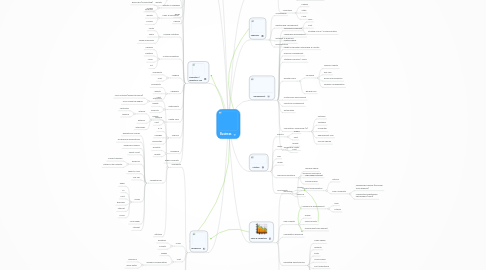
1. Workforce
1.1. Availability
1.1.1. Attraction
1.1.1.1. From Outside (usually technical)
1.1.1.2. From Inside the Region
1.1.2. Training
1.1.2.1. Internal
1.1.2.1.1. Mentoring
1.1.2.1.2. Training
1.1.2.2. External
1.1.2.3. Internships
1.1.3. Marketing For
1.1.3.1. Educational Offices
1.1.3.2. Professional Associations
1.1.3.3. Temporary Agency
1.1.3.4. Talent Scout
1.1.3.5. Referrals
1.1.3.5.1. Current Workers
1.1.3.5.2. Others in the Industry
1.1.3.6. Temp-to-Hire
1.1.3.7. Job Fair
1.1.3.8. Media
1.1.3.8.1. Radio
1.1.3.8.2. TV
1.1.3.8.3. Print
1.1.3.8.4. Billboard
1.1.3.8.5. Internet
1.1.3.8.6. Social
1.1.3.9. Local Paper
1.1.3.10. Internet
1.1.4. Attitude
1.2. Union
1.2.1. Relations
1.2.2. Climate
1.3. Cost
1.3.1. Wages
1.3.2. Workers Compensation
1.3.2.1. Insurance
1.3.2.2. Injury Rates
1.4. Retention
1.4.1. Age / Retirement
1.4.2. Workfoce Diversity
1.5. Benefits Package
1.5.1. Life Insurance
1.5.2. Health
1.5.2.1. Insurance
1.5.2.2. Health Savings Account
1.5.3. Disability Insurance
1.5.4. Paid Time Off
1.5.4.1. Vacation
1.5.4.2. Holiday
1.5.4.3. Sick Leave
1.5.5. Dependent Care Account
1.5.6. Bonus
1.5.7. Profit Sharing
1.5.8. Tuition Reimbursement
1.5.9. Retirement Contribution
1.5.10. Uniform Allowance
1.5.11. Non-credit Training / Professional Development
1.5.12. Worker Discounts on Merchandise
1.5.13. Company Car
1.5.14. In-Kind Benefits (meals, housing, etc.)
2. Business Climate
2.1. Responsiveness
2.2. Other Businesses
2.2.1. Joint Promotion
2.2.2. Coordinated Efforts
2.3. Collaboration
2.3.1. Resource Providers
2.4. Political
2.4.1. Regulatory
2.4.2. Cost of Living
2.4.3. Taxes
2.5. Community Attitudes
3. Infrastructure
3.1. Facilities
3.1.1. Competing Land Uses
3.1.2. Availability
3.1.2.1. Expansion Potential to Existing
3.1.2.2. Land
3.1.2.3. Existing Buildings in Region
3.1.2.4. Industrial Parks
3.1.2.5. Foreign Trade Zone
3.1.3. Cost
3.1.4. Environmental Regulations
3.2. Protection
3.2.1. Police
3.2.2. Fire
3.2.3. Disaster
3.2.4. Paramedic / EMT
3.3. Airport
3.3.1. Fequency
3.3.2. Cost
3.4. Streets & Highways
3.4.1. Bike Trails (Commuting)
3.4.2. Access
3.5. Barge
3.6. Parking
4. Amenities / Quality of Life
4.1. Commute Times
4.2. Housing
4.2.1. Cost
4.2.2. Quantity
4.2.3. Quality
4.3. Parks & Recreation
4.3.1. Quantity
4.3.2. Quality
4.3.3. Access
4.4. Diverse Activities
4.4.1. Youth
4.4.2. Teens
4.4.3. Single Individuals
4.5. Cultural Amenities
4.5.1. Libraries
4.5.2. Theaters
4.5.3. Music
4.5.4. Art
4.6. Lodging
4.6.1. Availability
4.6.2. Cost
4.7. Childcare
4.7.1. Availability
4.7.2. Quality
4.7.3. Cost
4.8. Restaurants
4.8.1. Quality
4.8.2. Diversity
4.9. Health Care
4.9.1. Quality
4.9.2. Cost
4.10. Schools
4.10.1. K-12
4.10.2. Colleges
4.10.3. Universities
4.11. Shopping
4.11.1. Quantity
4.11.2. Quality
4.12. Ethnic Diversity
5. Utilities
5.1. Electric
5.1.1. Supply
5.1.2. Cost
5.2. Water
5.2.1. Quality
5.2.2. Cost
5.3. Gas
5.4. Sewer
5.5. Telecommunications
5.5.1. Landline Phone
5.5.2. High Speed Internet
5.5.3. Cellular Phone
5.6. Solid Waste
5.6.1. Landfill
5.6.2. Recycle
6. Sales & Marketing
6.1. Innovation
6.1.1. Workforce Efficiency
6.1.2. Product Diversification
6.1.2.1. Internal
6.1.2.2. From University
6.1.2.2.1. Technology Transfer (purchase from research)
6.1.2.2.2. Manufacturing Extension Partnerships (MEPs)
6.1.3. Research & Development
6.1.3.1. SBIR
6.1.3.2. Internal
6.2. New Markets
6.2.1. Global
6.2.2. New Products
6.2.3. Government Procurement
6.3. Competition Research
6.4. Marketing Effectiveness
6.4.1. Trade Shows
6.4.2. Website
6.4.3. eMail
6.4.4. Social Media
6.4.5. Print Advertising
6.4.6. Direct Mail
6.4.7. Billboard
6.4.8. Radio
6.5. Sales Strategies
7. Management
7.1. Succession Planning
7.2. Leadership Development
7.3. Indstry Trends
7.4. Larger Corporation Ownership & Climate
7.5. Financial Management
7.6. Strategic Planning / Vision
7.7. Disaster Plans
7.7.1. Insurance
7.7.1.1. General Liability
7.7.1.2. Key Man
7.7.1.3. Errors and Omissions
7.7.1.4. Workers Compensation
7.7.2. Backup Plan
7.8. Continuous Improvement
7.9. Inventory Management
7.10. Automation
7.11. Information Technology (IT)
7.11.1. Network
7.11.2. Software
7.11.3. Computer
7.11.4. Replacement Plan
7.11.5. Cellular Phones
7.12. Workplace Safety
8. Suppliers
8.1. Vulnerability
8.2. Relationship Management
8.2.1. Time
8.2.2. Cost
8.2.3. Strategy Tie-In / Communication
8.3. Distance to Business
8.4. Diversification
9. Access to Capital
9.1. Debt
9.1.1. Short Term
9.1.1.1. Line of Credit
9.1.1.2. Some Revolving Loan Funds
9.1.2. Long Term
9.1.2.1. Bank Loans
9.1.2.2. Some Revolving Loan Funds
9.2. Equity
9.2.1. Venture Capital
9.2.1.1. State
9.2.1.2. Private
9.2.2. Angel Investors
9.2.3. Some Revolving Loan Funds
9.3. Incentives
9.3.1. Federal
9.3.2. State
9.3.3. Local
